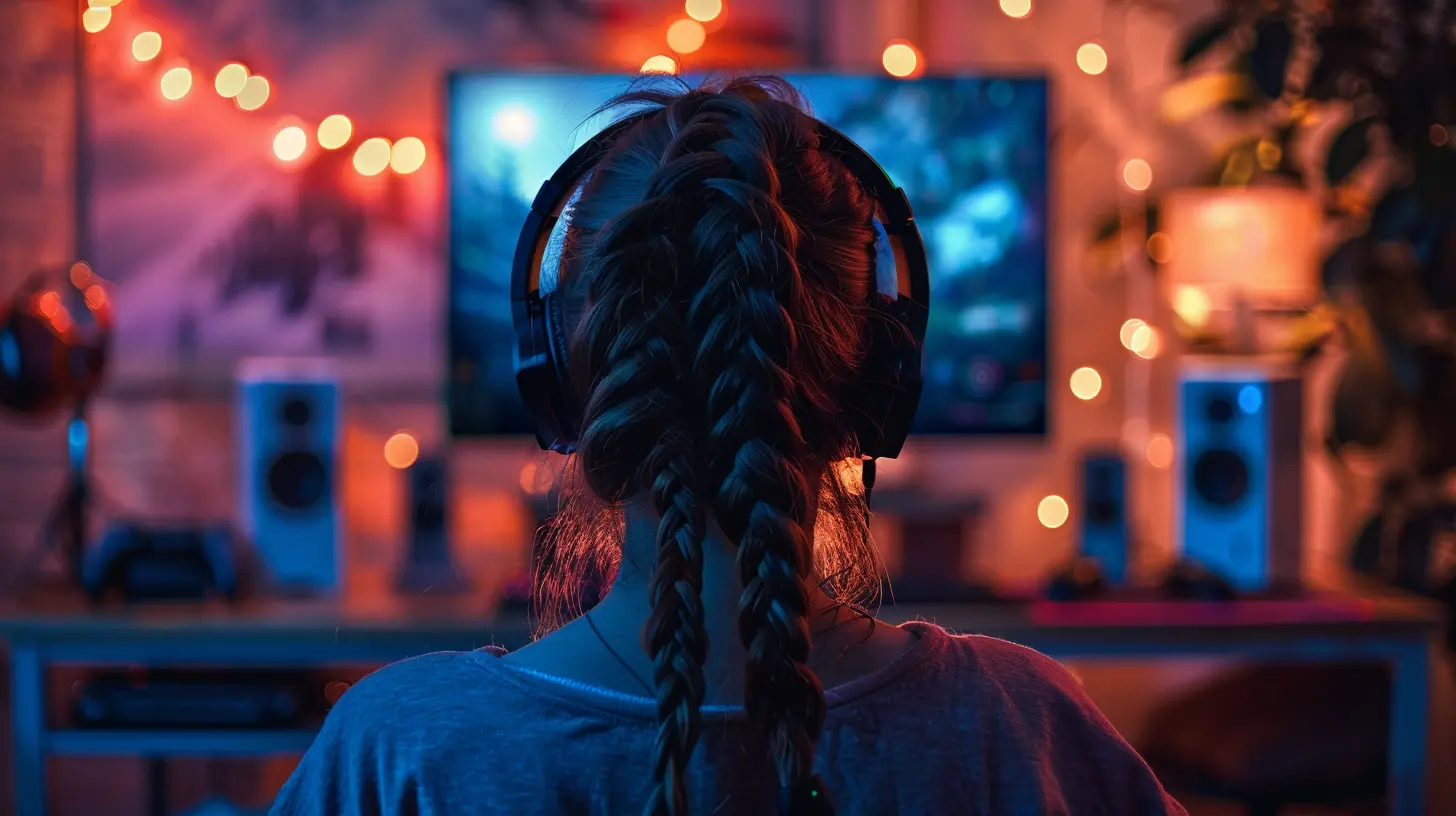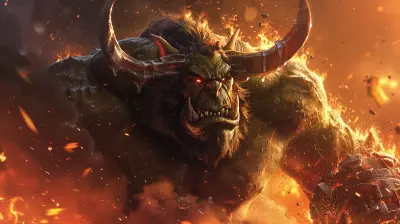How Game Developers Use Soundtracks to Create Atmosphere
25 November 2025
Ever played a game that gave you goosebumps just from the music alone? We've all been there—walking through a haunted corridor or charging into battle—and the soundtrack makes all the difference. That heart-pounding beat, the eerie hum in the background, or the grand orchestral rise right before a boss fight? That’s no accident. Game developers put a ton of thought into crafting soundtracks that shape how we feel while playing.
In this article, we’re diving deep into how game developers use soundtracks to create atmosphere. We’re talking about the good, the bad, the ugly—and the downright brilliant. So, buckle up, turn up your favorite game OST, and let’s get into it.
Why Game Soundtracks Matter More Than You Think
Let’s start with the basics. A video game soundtrack isn’t just background noise. It’s an emotional compass. It guides players through the game, sets the tone, and enhances immersion.Imagine playing Minecraft without its ambient tunes. Or sneaking around in Metal Gear Solid without that sneaky, suspenseful music. Feels… empty, right? That’s because soundtracks are basically the soul of a game’s atmosphere.
Here’s what great soundtracks do:
- Trigger emotional responses: Fear, joy, excitement—you name it.
- Support the narrative: Helping tell the story, even when nothing’s being said.
- Enhance immersion: Making you feel like you’re right there, in that world.
- Provide cues: Warning you when danger’s coming or a puzzle is near.
Dynamic vs. Static Soundtracks: What’s the Difference?
Soundtracks in games come in two main flavors—static and dynamic.🎵 Static Soundtracks
A static soundtrack is what it sounds like—it doesn’t change. It plays consistently in a particular scene or level. Think of it like a background score in a movie scene. You hit a boss fight, and bam—epic music kicks in and stays that way, no matter what you do.🎶 Dynamic Soundtracks
Now, this is where things get interesting. Dynamic soundtracks adapt based on what the player does. They shift in intensity, tempo, or style, depending on gameplay.For example, in The Legend of Zelda: Breath of the Wild, the music changes subtly when you approach enemies. You may not even realize it at first, but your brain does—and it tells you, “Heads up!”
Dynamic music is like a chameleon. It blends with your actions, emotions, and the environment, making every moment feel alive and reactive.
The Role of Soundtracks in Genre-Specific Atmospheres
Different game genres need different vibes. You wouldn’t expect death metal in a cozy farming sim, right? Let’s break it down.🎮 Horror Games: Tension and Unease
In horror titles like Resident Evil or Silent Hill, the soundtrack is half the terror. Low frequencies, distorted sounds, and sudden silence create a palpable tension. Sometimes, the absence of music is louder than any scream.Ever noticed how creepy it gets when the music suddenly stops? That’s intentional. It makes you think something awful is about to happen—even if it doesn’t.
⚔️ Action and Adventure: Adrenaline and Excitement
Games like God of War or Uncharted use high-energy orchestral scores to fuel adrenaline. The music swells as you leap across cliffs or take down a horde of enemies. It’s like caffeine for your ears, pumping you up for the action.💡 Puzzle and Strategy: Focus and Clarity
Puzzle games, such as The Witness or Tetris Effect, feature ambient or minimalist music. Why? To help players concentrate. The soundtrack here is less about drama and more about flow. It gets inside your mind, guiding your thought process without being distracting.🏡 Simulation and Indie Games: Comfort and Whimsy
From Stardew Valley’s relaxing guitar strums to Journey’s mystical orchestration, simulation and indie games often go for something calming or emotionally rich. Music here is all about comfort, creativity, or pure vibe.
Crafting Atmosphere with Instruments and Styles
Let’s get nerdy for a second—but in the fun way.Game developers work closely with composers to choose the right instruments and music styles to match their game world. Here’s how that plays out:
1. Orchestral Scores = Epic Adventures
These are your Eldin Rings and Final Fantasies. Full orchestras bring scale, grandeur, and emotion. Strings for sorrow, brass for heroism, percussion for tension.2. Synth and Electronic = Futuristic Feels
Games like Cyberpunk 2077 or Mass Effect use synthesizers and digital elements to build sci-fi landscapes. Think neon lights, dark corridors, and moody vibes.3. Folk and Acoustic = Down-to-Earth Charm
Perfect for games set in rustic or natural environments. Picture Skyrim’s Nordic themes or the acoustic plucking in Oxenfree. These sounds ground the player.4. Jazz and Lo-Fi = Chill and Stylish
For the cool cats and noir fans. Persona 5 blends jazz and funk to give Tokyo life. Lo-fi beats in games like Coffee Talk create a comfy, modern-day lounge feel.Legendary Examples of Soundtrack Atmosphere in Games
Some games absolutely nail the use of music to craft atmosphere. Let’s shine a spotlight on a few legends.🎼 The Last of Us
The melancholy guitar work by Gustavo Santaolalla is hauntingly beautiful. It paints a post-apocalyptic world with emotions—grief, hope, tension—all without saying a single word.🌀 Journey
Austin Wintory’s Grammy-nominated soundtrack adapts in real-time to your experience. It elevates the game into something spiritual. It’s minimalist, emotional, and unforgettable.🌌 Halo
Marty O'Donnell’s iconic Gregorian-like chants and epic scales define the Halo universe. That opening theme? Goosebumps every time. It gives the feeling of something ancient and mysterious, matching the game’s sci-fi lore.🔥 Doom (2016)
Heavy metal meets mayhem. Mick Gordon’s aggressive, industrial metal score doesn’t just accompany the violence—it becomes a part of it. When the guitars start shredding, you know it’s time to rip and tear.Adaptive Music: Sound That Reacts to You
One of the coolest things about modern game audio is adaptive music. It’s not just playing in the background—it’s responding to your choices.In Red Dead Redemption 2, for example, the music shifts based on your honor level and situation. Are you a noble hero or a dangerous outlaw? The game knows, and it plays music that matches your persona.
This kind of responsive soundtrack personalizes the gaming experience. It’s like the game is jamming with you in real-time, riffing off your every move.
How Indie Developers Are Pushing Creative Boundaries
Indie games may have smaller budgets, but they often take bigger risks musically. They aren’t afraid to mix genres, use unconventional instruments, or hire lesser-known composers with unique styles.Games like Celeste and Hollow Knight have soundtracks that are both emotionally rich and sonically unique. They dare to be different—and gamers love them for it.
Indie devs also often work closely with composers throughout development. This tight collaboration leads to soundtracks that are fully intertwined with gameplay and story.
Soundtrack as Narrative: Telling Stories Without Words
Sometimes, music does what dialogue can’t. It fills in emotional gaps, hints at backstory, or builds anticipation.In Undertale, different character themes reflect their personalities. When you hear a familiar melody reused in a new way, it ties the narrative together. It’s not just a song—it’s storytelling.
Soundtrack motifs—those repeated themes or melodies—act like musical bookmarks. They help players emotionally bookmark events and characters, adding depth without extra exposition.
Technology Meets Creativity: The Future of Game Soundtracks
With the rise of AI-generated music, spatial audio, and haptic feedback, the potential for immersive soundtracks is limitless.Imagine game music that adapts to your heartbeat using a wearable, or 3D audio that makes you feel like enemies are creeping up behind you. Frightening? Yes. Awesome? Also yes.
Music is becoming more than just sound—it’s becoming an experience, and game developers are leading that charge.
Final Thoughts: The Soundtrack Is the Soul
At the end of the day, a game’s soundtrack is more than just filler noise. It’s the emotional glue. The magic thread that binds gameplay, story, setting, and emotion into one seamless experience.Next time you boot up your favorite game, pay attention to the music. Feel how it moves with you. You might just realize it’s doing more heavy lifting than you ever noticed.
And if you're a budding game dev? Don’t skimp on the soundtrack. It's where the atmosphere lives.
all images in this post were generated using AI tools
Category:
Original SoundtracksAuthor:

Lucy Ross

